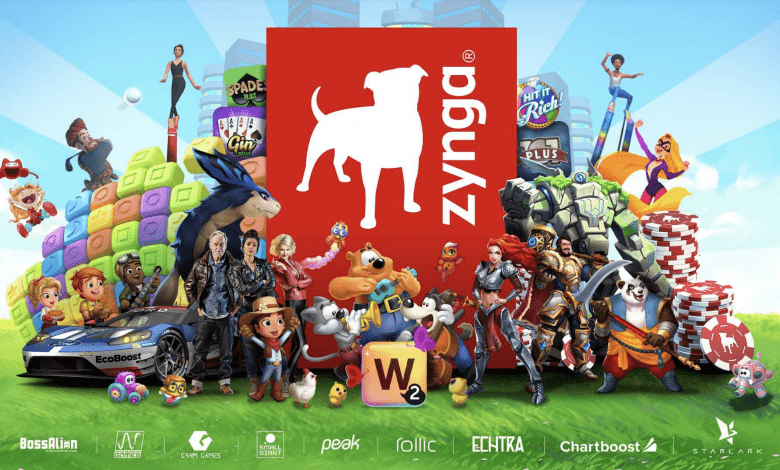Top 4 Intriguing Web3 Games Need to Face to Break into the Traditional Gaming Market of Asia
The gaming industry in Asia is a massive and vibrant ecosystem, home to some of the most successful franchises, gaming companies, and player communities in the world. Countries like China, Japan, South Korea, and Southeast Asia have long been at the forefront of gaming innovation, with both PC and mobile gaming sectors contributing significantly to global gaming revenues. However, the emergence of Web3 gaming—which leverages blockchain, NFTs (Non-Fungible Tokens), and cryptocurrencies—presents a new challenge and opportunity for game developers looking to break into Asia’s well-established gaming market.
Web3 games promise decentralized ownership, play-to-earn (P2E) models, and true digital asset ownership, appealing to a growing number of players in the West. However, in Asia, the traditional gaming market is deeply entrenched, and Web3 games need to overcome several barriers and adopt region-specific strategies to gain a foothold. This article explores the key challenges and strategies Web3 games must consider to successfully penetrate the traditional gaming market of Asia.
Understanding the Traditional Gaming Market in Asia
1. Market Size and Growth Potential
Asia’s gaming market is the largest in the world, contributing over 50% of global gaming revenues. Major gaming hubs include:
- China: The world’s largest gaming market, dominated by companies like Tencent and NetEase.
- Japan: Known for its long history in console gaming, with brands like Nintendo and Sony.
- South Korea: A leader in PC and esports gaming, home to Blizzard’s StarCraft and Riot’s League of Legends.
- Southeast Asia: A rapidly growing mobile-first gaming market with countries like Indonesia, Thailand, and Vietnam emerging as significant players.
In Asia, gamers expect high-quality experiences, whether it be from mobile, console, or PC games. Web3 games must meet these standards while introducing their blockchain-based innovations.
2. Cultural Differences and Preferences
Asian gamers tend to gravitate toward games that provide immersive worlds, rich storytelling, and strong social elements. For instance:
- China and Japan: Players favor role-playing games (RPGs), massively multiplayer online (MMO) games, and gacha mechanics.
- South Korea: A strong esports culture drives the popularity of competitive games, such as MOBAs (Multiplayer Online Battle Arenas) and battle royale games.
- Southeast Asia: Mobile gaming dominates due to high smartphone penetration and an appetite for quick, action-packed games.
Web3 games that want to break into this market must adapt their gameplay mechanics and narratives to align with local tastes.
3. Monetization Models
In traditional Asian gaming markets, free-to-play (F2P) models dominate, especially in mobile gaming. These games rely heavily on microtransactions, cosmetic upgrades, and in-game purchases, without requiring players to spend money upfront. Web3 games, on the other hand, typically rely on play-to-earn (P2E) mechanics, where players can earn in-game currency and assets that hold real-world value.
To succeed, Web3 games must reconcile their P2E mechanics with the free-to-play culture that’s dominant in Asia.
Also, read – How Are Free-to-Play Web3 Games Paving The Way For Mass Adoption In The Blockchain Gaming Landscape?
Challenges for Web3 Games Entering Asia’s Traditional Gaming Market
1. Regulatory Hurdles and Government Policies
One of the most significant barriers to Web3 gaming in Asia is regulatory uncertainty. In countries like China, the government has imposed strict regulations on both the gaming and cryptocurrency sectors. China’s restrictions on cryptocurrency trading and blockchain-based games make it difficult for Web3 games to operate legally.
Similarly, South Korea has imposed strict rules around crypto trading, and Japan has a complex regulatory framework for crypto-based businesses. These restrictions pose a challenge for Web3 developers looking to deploy their games in these regions, especially if their games depend on NFTs or tokenized economies.
Solutions:
- Compliance: Web3 gaming companies must work with local regulators and legal teams to ensure their games comply with country-specific regulations.
- Localized Versions: Creating non-crypto versions of games or offering optional blockchain elements could help Web3 games enter markets like China, where strict bans exist on crypto and NFT transactions.
- Partnerships: Collaborating with established gaming companies or platforms in Asia, like Tencent, Gumi, or Nexon, could help navigate regulatory frameworks more easily.
2. Blockchain Adoption and Infrastructure
Although the blockchain ecosystem is growing globally, blockchain adoption in Asia varies by country. In China, the government has embraced blockchain technology but banned cryptocurrency trading. Meanwhile, countries like South Korea and Japan have embraced both, but the adoption of blockchain-based games remains niche compared to traditional gaming.
For Web3 games to gain traction in Asia, they must focus on improving accessibility and educating players about the benefits of blockchain gaming.
Solutions:
- Seamless Onboarding: Web3 games must simplify the onboarding process by integrating easy-to-use crypto wallets, reducing the barrier to entry for players unfamiliar with blockchain technology.
- Cross-Chain Interoperability: Web3 games should consider supporting multiple blockchain networks to appeal to a wider audience, particularly in countries with varying levels of blockchain adoption.
- Community Engagement and Education: Hosting workshops, webinars, and educational content to help Asian gamers understand the benefits of blockchain gaming could build trust and drive adoption.
3. Skepticism Toward Play-to-Earn (P2E) Models
While P2E games like Axie Infinity have garnered global attention, many Asian gamers remain skeptical of the long-term value and sustainability of such models. The perception of Web3 games as being primarily speculative or focused on monetary gain rather than fun could alienate traditional gamers, who value entertainment and skill development.
Solutions:
- Hybrid Models: Web3 games should focus on delivering a fun-first experience while offering the option for players to engage with P2E mechanics if they choose. By prioritizing gameplay over earnings, these games can appeal to traditional gamers.
- Sustainable Economies: Developers need to create balanced in-game economies that do not collapse due to inflation or excessive token issuance. Transparent communication about the game’s economic design will also help build trust among skeptical players.
4. High-Quality Game Design and User Experience
Asian gamers, particularly in Japan, South Korea, and China, have come to expect high-quality graphics, polished gameplay, and engaging stories. Many Web3 games currently lack the production quality of AAA games developed by traditional studios, focusing more on blockchain integration than the gaming experience.
To break into Asia’s market, Web3 games must raise the bar in terms of production values and user experience (UX).
Solutions:
- Collaborating with Traditional Studios: Web3 developers can partner with experienced game design studios to produce higher-quality games. This helps improve the gameplay experience while leveraging blockchain technology.
- User-Centered Design: Developers must prioritize UX, ensuring that blockchain elements like wallets, NFTs, and in-game tokens are intuitive and non-disruptive to the gaming experience.
- High-Quality Narrative and Aesthetics: Asia is known for its deep appreciation of story-driven games, so Web3 games should focus on creating rich lore, character development, and world-building, alongside P2E or blockchain mechanics.
Strategies for Web3 Games to Succeed in Asia
1. Localization and Cultural Adaptation
Localization goes beyond mere translation of in-game text; it requires adapting the game’s art, mechanics, storylines, and even monetization models to suit regional preferences. Web3 game developers must account for cultural differences and preferences across different Asian markets.
Key Considerations:
- China: In China, players are drawn to mobile RPGs and competitive multiplayer games. However, games with Chinese mythology and cultural themes resonate particularly well.
- Japan: Japanese gamers tend to favor turn-based strategy games, RPGs, and narrative-driven experiences. Characters and storylines are of paramount importance.
- South Korea: Esports and competitive gaming dominate, with a strong preference for real-time strategy games and MOBAs.
- Southeast Asia: A mobile-first market, where action-packed and competitive mobile games thrive. Localizing Web3 games for mobile platforms is essential.
Web3 developers should also tailor marketing campaigns and community-building efforts to local cultures. Collaborating with local influencers, gaming communities, and esports teams will help drive awareness and engagement.
2. Enhancing Trust and Security
Blockchain games often face scrutiny due to past incidents of hacks, scams, and rug pulls. For Web3 games to gain traction in Asia’s traditional gaming market, they must establish a reputation for security and trust.
Strategies:
- Audits and Transparency: Conduct regular security audits of smart contracts, tokenomics, and game mechanics to ensure the safety of player funds and assets.
- Trustworthy Partners: Working with trusted local partners, including blockchain exchanges, gaming platforms, and payment gateways, can lend credibility to the Web3 game.
- Secure Wallet Integration: Simplifying wallet setup and integrating robust security features, such as two-factor authentication, will build player confidence in blockchain technology.
3. Building Strong Communities
Gaming in Asia is highly social, with gamers often forming tight-knit communities both in-game and offline. Web3 games need to tap into these community dynamics to succeed in the region.
Key Tactics:
- Esports Tournaments and Competitions: Given the massive popularity of esports in Asia, Web3 games should consider organizing tournaments, complete with prize pools and sponsorships, to attract competitive gamers.
- Incentivizing Content Creation: Encouraging content creation through platforms like Twitch, YouTube, or local equivalents such as Douyin (TikTok in China) will help Web3 games generate organic visibility and engage the broader gaming audience.
- Community-Driven Governance: Offering gamers the ability to participate in the governance of the game, through token-based voting or decision-making, could appeal to players who value autonomy and influence over the games they play.
4. Innovative Monetization Models
While P2E models are central to many Web3 games, they may not resonate with all gamers in Asia. Instead, Web3 developers should explore hybrid monetization models that combine free-to-play mechanics with blockchain-based ownership.
Innovative Models:
- Freemium + NFTs: Offer free-to-play access with the option to purchase NFTs that provide cosmetic upgrades or unlock special abilities.
- Gacha Mechanics with NFTs: Gacha systems, where players randomly unlock characters or items, are popular in Asia. Integrating NFTs into this mechanic could provide real ownership of rare in-game items, adding value for players.
Conclusion
For Web3 games to successfully break into the traditional gaming market of Asia, developers must address the unique challenges and preferences of Asian gamers. By focusing on localization, high-quality game design, compliance with regional regulations, and innovative monetization strategies, Web3 games can position themselves as serious contenders in a competitive market. The key is to combine the strengths of blockchain—such as digital ownership and decentralized economies—with the gameplay experiences that have captivated Asian players for decades.
With careful planning and adaptation, Web3 games have the potential to not only disrupt but also enrich the gaming landscape in Asia, bringing new value and innovation to a region already brimming with talent and creativity.
Stay informed with daily updates from Blockchain Magazine on Google News. Click here to follow us and mark as favorite: [Blockchain Magazine on Google News].
Get Blockchain Insights In Inbox
Stay ahead of the curve with expert analysis and market updates.
latest from tech
Disclaimer: Any post shared by a third-party agency are sponsored and Blockchain Magazine has no views on any such posts. The views and opinions expressed in this post are those of the clients and do not necessarily reflect the official policy or position of Blockchain Magazine. The information provided in this post is for informational purposes only and should not be considered as financial, investment, or professional advice. Blockchain Magazine does not endorse or promote any specific products, services, or companies mentioned in this posts. Readers are encouraged to conduct their own research and consult with a qualified professional before making any financial decisions.

 Bitcoin
Bitcoin  Ethereum
Ethereum  Tether
Tether  XRP
XRP  Solana
Solana  Dogecoin
Dogecoin  USDC
USDC  Lido Staked Ether
Lido Staked Ether  Cardano
Cardano  TRON
TRON  Avalanche
Avalanche  Toncoin
Toncoin  Wrapped stETH
Wrapped stETH  Chainlink
Chainlink  Shiba Inu
Shiba Inu  Wrapped Bitcoin
Wrapped Bitcoin  Sui
Sui  Stellar
Stellar  Polkadot
Polkadot  Hedera
Hedera  WETH
WETH  Hyperliquid
Hyperliquid  Bitcoin Cash
Bitcoin Cash  LEO Token
LEO Token  Uniswap
Uniswap  Litecoin
Litecoin  Pepe
Pepe  Wrapped eETH
Wrapped eETH  NEAR Protocol
NEAR Protocol  Ethena USDe
Ethena USDe  USDS
USDS  Internet Computer
Internet Computer  Aptos
Aptos  Aave
Aave  POL (ex-MATIC)
POL (ex-MATIC)  Mantle
Mantle  Cronos
Cronos  Ethereum Classic
Ethereum Classic  Render
Render  Monero
Monero  WhiteBIT Coin
WhiteBIT Coin  MANTRA
MANTRA  Virtuals Protocol
Virtuals Protocol  Bittensor
Bittensor  Dai
Dai  Artificial Superintelligence Alliance
Artificial Superintelligence Alliance  Arbitrum
Arbitrum 


